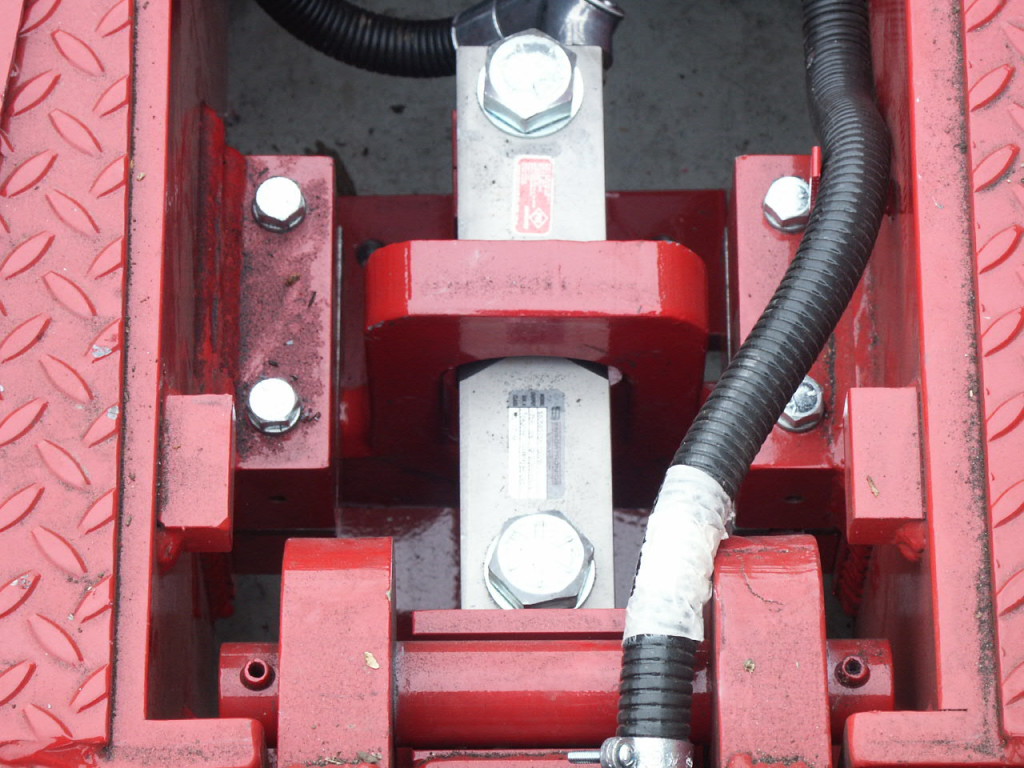
There are four factors that greatly affect the accuracy of your weighing system. If you suspect your weighing system is not weighing accurately, you may need to take into consideration the four following factors and make adjustments accordingly. Consult your scale service provider if you need additional information or assistance troubleshooting inaccuracy issues.
1. Load Cell Accuracy
The load cell is the major weighing component of all electronic weighing systems and a malfunctioning load cell will result in inaccurate weights.
In an effort to understand load cell functionality and its impact on your weighing system, there are a number of performance parameters that you should be familiar with:
- Nonlinearity: The maximum deviation of a load cell’s calibration curve from a straight line, charted between zero-weight and maximum rated capacity.
- Hysteresis: The difference in output when the same load is applied twice, once increasing from zero-weight and then decreasing from the load cell’s maximum rated weight.
- Non-Repeatability: The variations in calculated load for multiple measurements made by repeatedly loading the same loads in the same manner.
- Creep: The change in the measured weight when a load on the cell is left stationary for a long time.
- Temperature Effects: If the location of the load cell exposes it to significant temperature variations, its accuracy can be affected.
- Response Time: The amount of time a load cell takes to settle and give an accurate reading. Response time can be a major cause for errors if the load cell is repeatedly used for weighing processes with little time between weights.
2. Load Factors
Inaccuracies in weighing systems can result from the loads themselves, as well as the way the load is applied and supported:
- Improperly aligned and twisting loads can cause the load cells to interpret the force as weight and output changes inaccurately.
- All the weight of the load must be supported entirely by the load cell. It should not be resting on check-rods, bumpers or other stabilizing and protective elements.
- The load on the load cell is directly channeled through the mounting hardware, so any misalignment can throw the accuracy of the system.
- Ensure the mounting structure or the floor can bear the combined weight of the weighing system, its components and the load without flexing.
- Introduce cross braces on systems with flimsy support legs to reduce side loads when the support legs spread under strain.
3. Environmental Factors
A number of environmental factors can affect the accuracy of your weighing system by adding more force to the applied load and load cells:
- Wind Loading: Outdoor and even some indoor systems can be affected by air movement. A sensitive indoor system could be affected by air movement created by air conditioners or air ducts.
- Shock Loading: Dumping heavy materials suddenly on your weighing system can put more force than the maximum rated capacity and damage the system or the load cells.
- Vibration: Load cells, especially sensitive ones, can interpret vibrations from nearby equipment as additional force and provide incorrect output.
- Pressure Differentials: Weighing systems can register inaccurate measurements if the pressure of the operating environment is different from the calibration environment.
- Unclean Scale: Weighing systems can register inaccurate measurements if the load cells are receiving pressure from buildup under the scale. The weight of the load must be entirely supported by the load cell. For this to happen, the scale must be clean.
4. Interference
Load cells work by sending an electrical signal that is processed by a weight controller, which then outputs the result as the measured weight. Interference to the electrical signal at any point can throw the weight results.
- RFI and EMI: These can create ‘noise’ or additional input signals that can cause the controller to register incorrect weight.
- Moisture: Cables can wick moisture and condensation, causing electrical output to get coupled with input. This creates additional interference in the signals.
- Temperature: Wire resistance increases with temperature and causes voltage to drop, which results in the controller displaying different results than the load cell’s output.
To get more insights on how the accuracy of your weighing system is affected, contact Quality Scales Unlimited.




